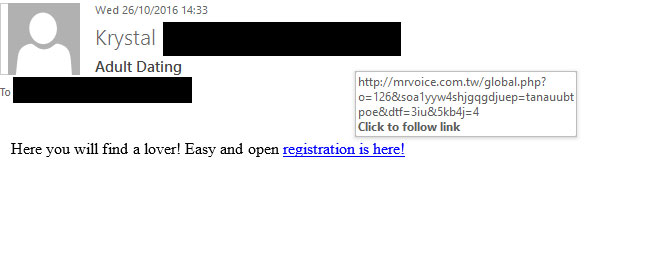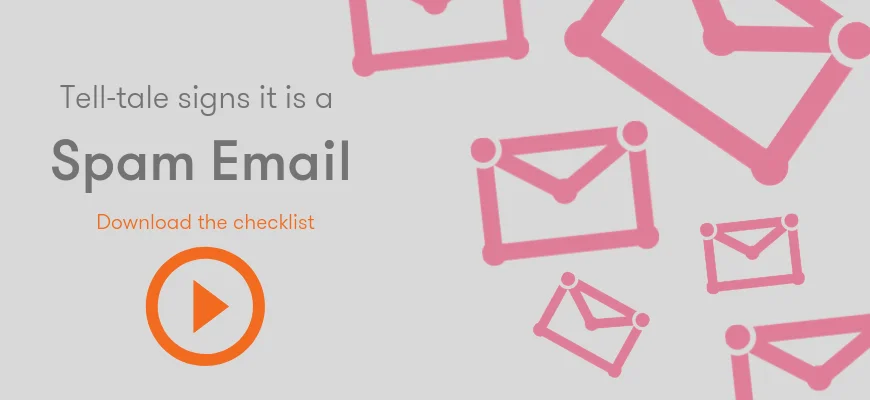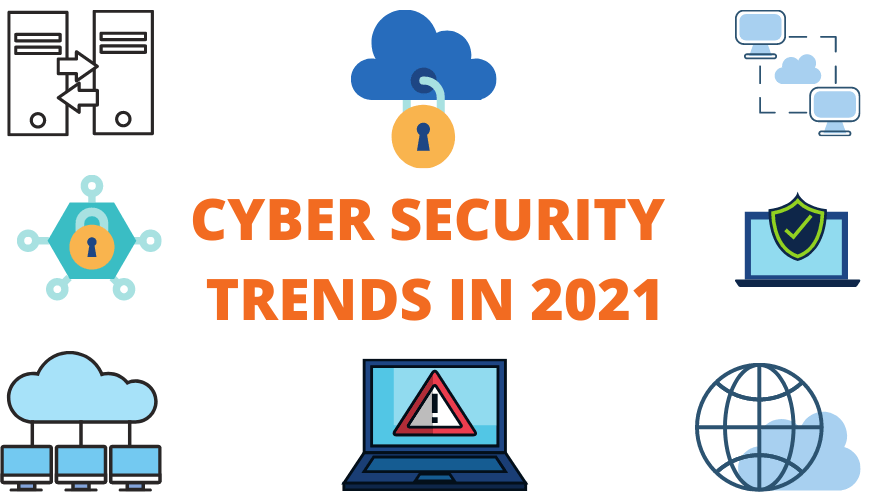Spam emails are one of the main tools hackers use to access computers and phones. We have therefore written this super helpful guide to highlight some email tricks to watch out for...
Spam emails are extremely annoying and spammers are always trying to find new ways to con you into handing over information, money etc. Unfortunately, even with the best systems in place some can still creep through. But what do you do when that happens? Follow the simple steps below…
Download our spam email checklist, so you're never caught out again.
Be suspicious!
This is our number one tip. Emails aren’t particularly secure and spammers are always trying new tricks to get through. If the email sounds too good to be true, it probably is.
Don't be fooled by branding
One way to try and fool people is through using a company’s branding to look legitimate. However, logos and other graphics can usually be captured by simple engineering or even Google!
Spelling mistakes
Beware of spelling mistakes! Quite a number of spam emails arrive with simple spelling mistakes, this is a big giveaway. Or, where spammers have improved their spelling, it’s common for grammar to still be lacking, poor grammar is another big giveaway.
Don’t open attachments
If you’re unsure of an attachment, someone you don’t know has sent you a document you’re unsure of or you receive an attachment you weren't expecting - don’t open it! Scan it or simply ignore it. If it’s urgent they’ll get in touch.
Your bank will never email you
“Dear Valued Customer, this is your bank, please send me your card details as we need them.” This type of email is one of the oldest tricks in the book. In all honesty, your bank will never email you asking for information. If you see one of these just delete it or notify the fraud specialists at your bank to prevent it from deceiving others. Scammers are also sending similar messages as text messages now, so watch out for that too.
Don’t click on the link
Increasingly, spam emails arrive from a compromised but legitimate email server, containing a few phrases, a link and no apparent threat. If you hover your cursor on the link it will look abnormal and show where the link goes to. It is via this link that the attacker will try to get something onto your computer - don't click on it! This can be harder to notice on a mobile without a cursor to hover over, so unless you’re 100% on the legitimacy of an email, never click an embedded link.

Urgent emails
We’ve heard quite a number of stories where spammers are quite specific in who they target, even going to the trouble of researching finance directors' names. They then email the accounts team demanding they send money quickly with a “sent from my iPhone” signature. If you see this kind of email, I would always ring the person who has supposedly sent it and ask them about it. Also, if it was really that urgent, wouldn’t they ring you rather than email? Any message like this should ring alarm bells straight away.
Email domain name
If an email comes from a public email domain, e.g. @gmail.com or @icloud.com, it isn’t likely to have come from a legitimate business. Most businesses will have an email domain matching that of their website, so you can easily check this to discover how genuine the email address is yourself. Be careful not to just read the display name as this can be set to anything you want, for example, the display name could be PayPal (so you automatically think it’s legitimate), but when you click on the actual email address this could be paypal@notice123.com (so not a legitimate email).
Another thing to check with the domain name is the spelling, at first glance an email may appear to be real but they may have purchased a very similar domain just with a wrong spelling, e.g. @paypaal.com.
Ways to stop spam emails
Whilst you can’t completely stop spam emails from being sent to your email address, these steps below will help reduce the amount of spam you receive. However, it’s important to still be vigilant using the steps above.
- Mark spam as spam. By marking up spam emails as spam, your email inbox will notice similar emails either from the same email address or with other common factors and automatically mark them as spam so you don’t have to sort them.
- After marking an email as spam, delete it. If you interact with spam email, the sender will be aware, whether this is opening and reading it or clicking on a link, and be more likely to send more.
- Keep your email address private. Try to avoid giving out your email address as much as possible, and only sign up to mailing lists you really want to be part of, the less places your email address is, the less likely you are to receive spam emails. We’d also recommend unsubscribing from old mailing lists you’re undoubtedly part of.
- Use a third-party spam filter. Most public domain emails, such as Gmail and iCloud, now have their own built-in spam filters. But by pairing this with a compatible third-party spam filter also, hugely reduces the amount of spam that can get through. Look into spam filters that work with your email address domain.
For more of our quick fire tips, and tell-tale signs of a spam email, check out our spam email checklist...




